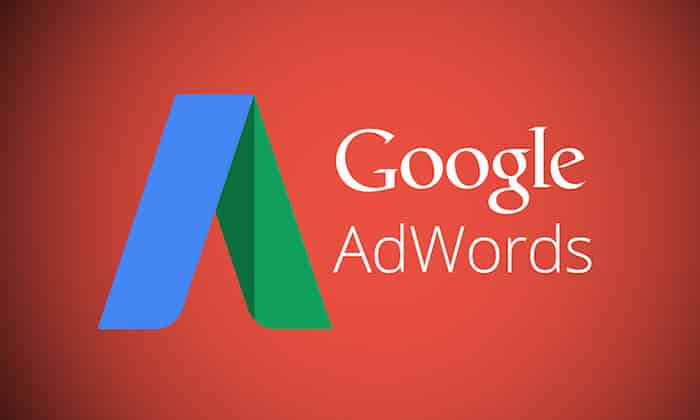Do email campaigns still have a place in your B2B digital strategy during the coming year after the exponential growth of social media during the COVID-19 pandemic?
Although some prognosticators always pop up to proclaim the death of email marketing at the end of every year, the opposite is true.
Email is not dead. It likely never will be. Contrary to the doomsayers, it is here to stay.
Your email lists and social media followers are both integral parts of a comprehensive digital strategy. Learn how to leverage both of them.
Table of Contents
Email’s Influence on B2B Digital Strategy
What Social Media Can Bring to the Table
Social Media or Email Newsletters: Why Not Both?
How to Drive More Revenue for Your Business Using Email
Look at Social Media and Email as a Team
Email’s Influence on B2B Digital Strategy
As Lyfe Marketing’s Keran Smith says, email is one of the most potent ways to reach out to your audience and engage them with compelling content. It makes a remarkable impact on both prospects and current customers.
Email is so effective on business prospects because, as individuals and consumers, this channel remains the best channel on which to communicate. It’s less intrusive than texting and certainly less stressful than live videos.
With 61 percent of US residents using email on a daily basis, as Smith points out, email likely reaches a majority of your company’s target market. That goes double if you’re trying to reach millennial decision-makers.
As a CNBC article points out, millennials spend more than six hours a day checking their emails – with over a third of them reading their work emails while still in bed. And, if you’re trying to reach Gen Zers, 85 percent of them, says Smith, prefer email more than other forms of communication.
What Benefits Will Email Bring to Your Digital Marketing Strategy?
Personalized messaging: Not only can it reach a wider audience, but an email newsletter strategy can also help you get targeted information to key personnel in your sales funnel. With today’s technology, you can send personalized content that will address specific people’s concerns, objections, and pain points.
List segmentation: With email, you can segment your lists, allowing you to target email campaigns to specific segments of your audience based on their interests and business needs. As these targeted leads move along their customer journeys, you can adjust the content you publish to address typical questions they have at each stop along the way. As you build your relationship with your recipients, you can adapt your messaging to their changing expectations.
Extensive data analytics: When you inform your email analytics with the data you glean from social media, you have a 360-degree picture of their demographics, preferences and likes, location, and online behavior. Those data, in turn, allow you to create new segments and custom-tailor email messaging to each.
Owned channel: One of the often-overlooked benefits of email advertising and marketing is that your list consists of people who have already consented to receive email from you. Using email also makes your audience better than a “captive audience.” Your subscribers have already expressed an interest in your brand and what you offer. They’re likely to keep opening your emails, so long as you continue to provide them with valuable information.
What Social Media Can Bring to the Table
Most businesses realize that their presence on social media is a must these days. Many of them, however, do not realize what makes it such a critical aspect of their digital marketing strategy.
Sharing and Communicating Information
With the right strategy, social media can become one of your most influential interactive channels. Its strength lies in its more relaxed approach to interactions among your company and your followers. Its impact doesn’t stop there.
Since it is such a casual atmosphere, social media encourages sharing. All it takes is a click. It’s an amazing tool for building buzz around a product launch, introducing a new brand, or sharing information that interests your target audience.
Connecting Your Company with Industry Influencers
Social media is also a great place to connect with industry influencers, especially those that aren’t directly competitive with your company. When prospects see that these people have connected with your company, it will build trust in yours as well.
In fact, it’s a good idea to invite some of these industry leaders to write guest blog posts or articles for your newsletter, or record some video interviews. Doing so is a quick way to build brand authority in your field – and among potential customers.
Additionally, if you have a wellness or healthy food recipes website with a large email subscribers list, you can monetize your newsletters with ads from non-competitor advertisers in industries that align with your own. For instance, the wellness site could feature ads from yoga and Pilates equipment stores. The recipe site, on the other hand, could feature ads from various prominent supermarkets that sell the ingredients in their recipes.
The Limits of Social Media in Digital Marketing
Too many companies depend on social media as their main channel for digital marketing. First of all, your posts are subject to the whims of each platform’s censors. More importantly, it’s not an owned channel, like your emails or website.
Furthermore, social media can’t reach into the inboxes of the people that are the bread and butter of your business: people who have engaged with previous content. And, it’s time-dependent. If a social post arrives while your prospect is offline, it will likely get lost in a pile of notifications. An email message stays in the inbox until the recipient opens it.
Email also allows you to test your ideas better than if you used social media. If you’re a digital marketing company that provides marketing tips, you can use your newsletter to test ideas that can eventually grow into a full-fledged course that you can sell. If they work for your email recipients, you can probably go ahead and offer courses for sale.
Such testing is virtually impossible on social media because of their algorithms. Your message will only appear to a few people; whereas, with email, it will appear to everyone on your list.
Social Media or Email Marketing: Why Not Both?
It doesn’t have to be either-or. Both social media and email newsletters have their place, as well as their pros and cons. And if you have the right strategy, they work together in perfect synchronization to meet your marketing goals.
Think of social media as a supporting role in a film. It sets the stage for the star to make its entrance.
With all the new privacy regulations, such as GDPR, you can’t just mass-mail everyone you think might be a prospect. Nor would you want to. A spammy inbox can turn a prospect into a detractor in no time.
Enter social media. Free to use and equipped with a variety of analytics tools, social media serves as a matchmaker between your prospects and your email list. Double its effectiveness if you take advantage of low-cost social ads that target your likely subscribers with appealing posts at a time when they’re likely to be on social media.
Instead of blatant self-promotional ads, use links to blog posts that will help them learn new information that aligns with their interests and pain points. Once they’re on your website, use a call to action that invites them to subscribe to your newsletter for more helpful articles, delivered straight to their inbox.
For this strategy to succeed, you need to post great quality content. The goal is to turn them into avid newsletter subscribers who can’t wait for your newsletter to arrive in their inbox.
Combine both social media and email marketing in every aspect of your online marketing strategy. That means that both the “hook” – the short blurb that appears in your social media posts – and the article itself are informative, useful, and easy to read.
Engage them with social media, and draw them into their customer journey with your content. As you strengthen the bond between prospective customers and your brand, you’ll drive sales.
That’s where email advertising takes the stage. As an email publisher, you’ll act as a laser-targeted channel for advertisers, too, who want to promote their own portfolio of products, services, and information.
If you want to give your subscribers a valuable experience, then publishing newsletters consistently can increase your brand awareness, a critical asset for your business. If you include digital advertising within the body of your emails, you’ll also boost your revenue.
Using programmatic advertising that uses artificial intelligence (AI)-chosen native ads that will interest your readers will bring even more value to their experience. Using a social media strategy to drive them to your email list will make you more visible, increase engagement, and bring in more money for your business.
How to Drive More Revenue for Your Business Using Email
When you look at the long-term benefits of your social media channels and email marketing, you need to see both as partners, not rivals. Using programmatic, native, AI-based ads in conjunction with social media gives your marketing strategy extra clout.
Native ads appear as complementary articles to your main content, much like the “suggested articles” most content marketers include at the end of their blog posts. Because they’re native, they give your readers a seamless, not intrusive experience, as opposed to ads that scream “buy me!” They don’t detract from the reading experience; they heighten it.
Done right, email monetization through programmatic ads can generate a high volume of revenue no matter what kind of publisher you are or what industry your company is in. The ads will bring in extra money while you increase your subscribers’ engagement and position your company as a problem-solver.
When you become one of your industry’s trusted sources of actionable information, your email list — and your profit — will grow well beyond your highest expectations. Look no farther than the Huffington Post for inspiration. Starting as a simple blog and email newsletter, it has grown to become one of the most notable online news magazines in the industry today.
Look at Social Media and Email Marketing as a Team
You cannot look at social media and email marketing as competitors. They depend on each other. Social media helps to grow your email lists, while email marketing nets you more followers, comments, views, and shares.
Your digital marketing strategy should include both of these powerful tools. They form a robust two-pronged strategy, helping you to reach the audience numbers you need to propel you forward.
Original Source: feedproxy.google.com





